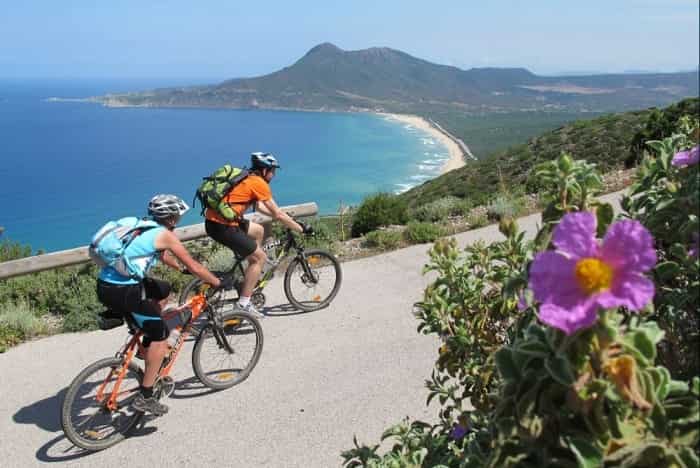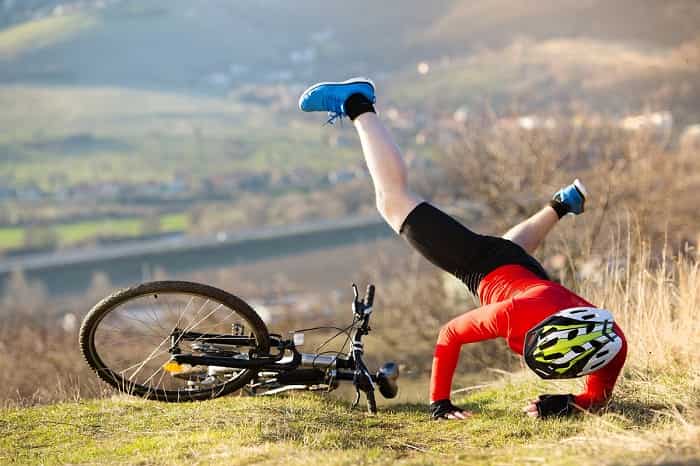Cyclists experience accidents for a great many reasons. Sometimes no one is at fault but more often than not it could have been prevented if greater care was taken by the cyclist themselves or by motorists and pedestrians with whom they share the roads and pathways. Here are some tips for avoiding accidents while out on your bike:

Make sure you’re visible to other road users:
Wear high visibility clothing. The safest garment is a luminescent, reflective high visibility jacket, á la construction workers and bin men. However if you haven’t got one of these or can’t bear to wear one then choose a white or bright t-shirt or coat that will cause you to stand out and potentially reflect car lights at night.
Attach bicycle lights and reflectors to your bike and use them. A front facing light is the most important accessory to any bike. This will act as your headlight, alerting vehicles or pedestrians of your approach. Reflectors on your bike will highlight your presence too.
Stay on the correct side of the road i.e. travelling in the same direction as other road traffic rather than against it. If you ride against traffic and come to a cross roads you’ll be run over. This is because your path and the path of the car turning onto your side of the road in front of you will collide.
Make you known to other roads users. You should do this by moving out from the curb so you’re in the sight line of car users. If you suspect you haven’t been seen e.g. at a junction then wave your arm to get noticed and use your bell when necessary e.g. at a blind corner. Remember though that your bell is only effective in alerting pedestrians. Car users are unlikely to hear you so it’s better to dismount at a blind corner and walk your bike until it’s safe again. The embarrassment of walking your bike is infinitely preferable to being squashed.
Use the area at traffic lights designated for bicycles. As the cars stop at the lights you can pull up to this area so that you’re first in the queue to pull off when the lights change. If you’re between a car and the pavement or between cars in lanes of traffic you may be forgotten resulting in an accident.
Obey the rules of the road and pavement.
As mentioned before you should cycle in the same direction as the traffic flow unless you’re using a cycle path that flows in the opposite direction to motor vehicle traffic. Always use a cycle path if there’s one present. It isn’t compulsory to do so but is safer as this is a dedicated area for you to use.
Cross the road at pedestrian crossings where possible. Large urban crossroads are extremely hazardous for cyclists so it’s better to take it in stages at crossings designed for pedestrians and cyclists. You’re required to dismount at crossings, reducing the risk of collisions with pedestrians.
Do not use the pedestrian pavements while cycling, this is dangerous and illegal. Not only are you increasing the risk of an accident involving a pedestrian but you’ll also be less visible to motorists when you dismount the pavement and enter the road e.g. when crossing a junction. Be aware though that sometimes the same courtesy is not extended to cyclists by pedestrians who often wander into cycle tracks. Be patient and polite, warning them of your presence with your bell and slow down to avoid a crash.
Reduce the impact of accidents

Accidents can happen even when all precautions are taken so the best way to make sure the impact of an accident is lessened is to prepare for one.
Wear safety equipment, particularly a helmet. This could save your life so never underestimate the importance of wearing one. Other safety equipment is unlikely to prevent breakages but will guard against superficial wounds which can be very painful.
Make a cycle claim if you get hit. Cyclists are the victims of other people’s bad habits and poor Judgement every day so if it happens to you then making a claim will help you to recover medical costs, equipment or get compensation for trauma caused.
